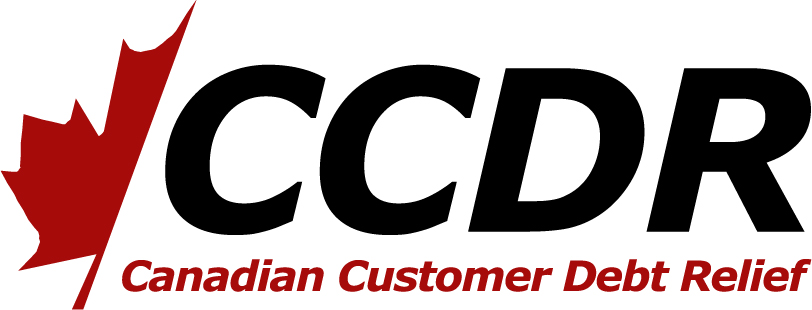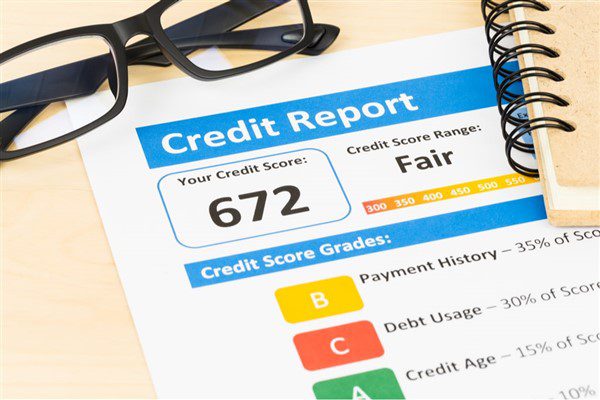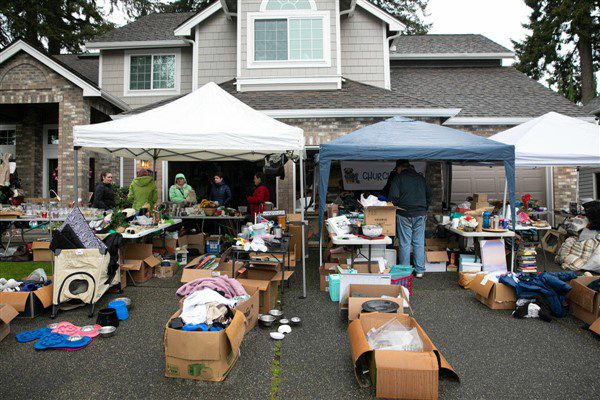Can Debt Relief Hurt Your Credit?
Managing debt is not the same as managing your credit. Debt negotiation, debt consolidation, bankruptcy and refinancing a loan all involve some form of change to your credit score. However, these changes don’t always have negative effects on your credit report. In this article, we will look at how each of these methods can affect your credit in different ways.
Debt Negotiation Can Hurt Your Credit
Debt negotiation is a way to settle debts with creditors without filing for bankruptcy. It can be a good option if you are having trouble paying your bills, and it can be a bad option if you want to keep your credit score intact.
Debt negotiations are conducted by third-party companies that work on behalf of consumers looking to reduce their debt burden. The company negotiates with the creditor and makes them an offer they cannot refuse: an amount less than what is owed, but still more than they would receive in court if they went through official proceedings (which often results in garnishment). If accepted by both sides, then everyone goes home happy.
Debt Consolidation Can Hurt Your Credit
Consolidating debt can be a great way to pay off your debt and get a fresh start, but it’s not the only option. Before you consider debt consolidation, make sure that you’ve exhausted all other options. If you have good credit, it might be better for you to use a personal loan or line of credit instead of consolidating your debts into one loan with higher interest rates.
When considering consolidation, make sure that you understand what will happen if you don’t repay the money in full on time. You should also know what kinds of fees might come along with this type of loan before committing yourself to an agreement like this.
Bankruptcy Can Hurt Your Credit
Bankruptcy is a legal action that can be taken against you in the event of financial hardship. It’s rare for debt relief to hurt your credit, but bankruptcy certainly can—and it can stay on your credit report for up to 10 years after being filed!
Bankruptcy can make it harder to get a loan or an apartment and can make it harder to get a job. The impact of bankruptcy is lessened if you have been diligent about paying off other debts during the period between filing for bankruptcy and having it discharged, but even so many landlords will still check a prospective tenant’s credit history before deciding whether or not they want them as a tenant (and some landlords may not rent at all).
Refinancing a Loan May Hurt Your Credit
If you are in the market for a new loan and are considering refinancing your debt, there are several things to consider. Do not assume that every lender will report their loans to the credit bureaus or that they will report them in an accurate manner. While some lenders do report their loans according to guidelines, many do not. Some lenders may report for only a short period of time, while others may never report at all!
These factors can be important when it comes down to getting approved for another loan or financing option because most financial institutions take into account your overall credit score when determining whether or not they want someone as their customer. If you have gaps in your history where no one knows what has happened over those years, this could cause problems with obtaining additional financing options later on down the road since having no information about how well managed your finances were during those periods gives lenders little assurance about how good of a risk you actually may be worth taking on board as one of their clients.”
Managing debt is not the same as managing your credit.
- Credit is a record of your financial history. It shows how you’ve managed credit cards, loans and other debt over time. Your credit score is a number that represents your creditworthiness as determined by the information in your credit report.
- A good credit score can save you money on interest rates when you borrow money (for example, to buy a car or house). A low or bad credit score may make it difficult for you to get loans or credit cards at reasonable rates without paying higher interest rates than someone with better-than-average scores.
Conclusion
Debt relief is important when you’re struggling to manage high debt. However, it can also affect your credit score. This is why it’s important to consider all of the options available before deciding on a debt relief option that will help get your finances back on track.
Saving for Retirement in Canada
Saving for retirement is an incredibly important part of successfully planning for your future, especially if you live in Canada. There are a lot of options available, and they can help you build up the funds that will allow you to retire comfortably. In this blog post, we’ll go over some of these different options so that you know exactly how to get started saving for your golden years!
Saving for retirement is important no matter where you live in the world.
Saving for retirement is important no matter where you live in the world. If you don’t save, then you won’t have enough money to last until the end of your life.
Saving early is one of the best ways to ensure that you’ll have enough money in retirement to cover all of your expenses. The earlier you start saving, the more time it has to grow. This means that if you start saving at 25 years old, your savings will be able to grow faster than if you started at 35 or 45 years old. To help put this into perspective:
- If you save $500 per month from age 25 until 65 years old and earn an average annual return on investment (ROI) of 5%, then by age 65, this would translate into about $330,000! That’s a lot more than if someone starts saving only five years later at age 30 and then stops contributions altogether after retiring at age 65 (which is actually quite common).
- Alternatively, if someone started contributing just $50 per month starting at age 25 years old but stopped making contributions altogether once they retired at 65 – again assuming average investment returns over those 40 years – they’d still end up with only $28,000 in total savings by retirement day!
Many Canadians benefit from a workplace pension plan.
Many Canadians benefit from a workplace pension plan. In fact, about two-thirds of all Canadians have an employer-sponsored pension plan. This is one of the best ways to save for retirement because your contributions are matched by your employer, and some employers also offer additional contributions.
Workplace pensions are required to meet certain standards, such as offering lifetime income options and having enough money set aside to pay out benefits when they’re due.
The Canada Pension Plan (CPP) provides pension benefits to retirees.
The Canada Pension Plan (CPP) provides pension benefits to retirees. CPP is a mandatory pension plan for most workers in Canada. It covers nearly all employees and self-employed persons who work in Canada and make regular contributions, either through voluntary deductions from their pay or by paying directly into the plan. If you don’t contribute to the plan, you will not be eligible for CPP benefits when you retire.
CPP provides monthly benefits to eligible workers after they retire, become disabled or die. These benefits are based on your earnings history and how long you contributed to the plan.
The Old Age Security (OAS) provides another important source of retirement income for many retirees.
The Old Age Security (OAS) provides another important source of retirement income for many retirees. OAS is a monthly payment from the government that’s available to Canadian citizens who are 65 years or older and currently living in Canada.
If you live in Canada, you can apply for OAS regardless of whether you’ve ever worked in Canada or not. However, if you were born outside of Canada and became a Canadian citizen after age 18 (or 21 if born before 1947), the earliest date that your OAS could begin is July 1st of the year following your 60th birthday.
The good news about OAS is that it’s not taxable income! That means no matter how much money comes from your pension plan(s) or other investments, any amount received from OAS will be deducted from what is owed by the government at tax time—it won’t count against your taxable income at all! The bad news: while these payments are not considered taxable income by Revenue Canada, they’re still counted toward determining eligibility for other benefits like Employment Insurance and Guaranteed Income Supplement (GIS). This can have an impact on whether those sources will pay out enough money so as not to affect other benefits such as CPP disability insurance or provincial health care coverage premiums.
The Registered Retirement Savings Plan (RRSP) is an account that will help you save and invest for retirement.
The Registered Retirement Savings Plan (RRSP) is an account that will help you save and invest for retirement. Contributions are made with after-tax money and the amount of your contribution is deducted from your taxable income. The amount you contribute to your RRSP will be based on your eligibility, which depends on how much you earned in the previous year. For example, if you earned less than $46,605 in 2018 ($52,923 combined income if married or common law), then your maximum contribution is 18% of your net income up to $26,230 ($29,040 combined income if married or common law). However, these limits can vary depending on whether you have unused contributions room from previous years and provincial tax rates.
For each year that you make contributions before April 1st following any given tax year (e.g., 2019), there’s a grace period until December 31st during which time withdrawals aren’t taxable; however when withdrawing funds after this deadline without incurring penalties requires being over 71 years old or having financial need related to purchasing a home or paying medical expenses . You may also be able to transfer some of the investment earnings into an RRIF – Registered Retirement Income Fund at any time without penalty; however this option requires starting mandatory withdrawals within seven years after opening one up
Tax-Free Savings Account (TFSA) helps you save and invest without paying tax on your earnings.
The TFSA is a savings vehicle that lets you invest your money without paying any tax on your earnings. While it’s similar to an RRSP in that it’s meant for long-term saving and investment, there are a few major differences:
- You can use the TFSA for short term goals like saving for a car or house, as well as retirement.
- Unlike an RRSP, there are no age restrictions on when you can start contributing to your account (but if you withdraw money before age 65, it will count towards your income).
- You won’t be taxed when withdrawing from your account, but if you sell shares outside of the account they will be taxed as capital gains which means they may be subject to higher rates than normal income tax rates.*
There are a lot of options for saving for retirement in Canada and it’s important to take advantage of them!
There are a lot of options for saving for retirement in Canada, and it’s important to take advantage of them! For example, if you’re eligible, you can contribute to an RRSP (Registered Retirement Savings Plan), which is a tax-deferred savings plan where you get a tax refund on your contributions. You can also save in an RESP (Registered Education Savings Plan), which will help pay for post-secondary education. And there are many more kinds of plans available!
The Canada Revenue Agency has some great tools on their website that can help you figure out how much money you’ll need when the time comes to retire. They even have calculators that will tell you how much should be saved each month so that by the time retirement arrives, there will be enough saved up to last until death or old age!
Conclusion
Canada has many great retirement savings options for Canadians. It is important to take advantage of these options so that you can save up for your retirement years and enjoy them!
Using Cash Vs. Credit Why Cash is Still King!
Credit cards are a great way to build credit and earn rewards, but they can also be dangerous. A lot of people end up in serious debt because they don’t know how to use them properly. When you use cash you get immediate gratification and it’s easy to budget your money if you keep track of how much you have on hand at all times. With that being said, here are some reasons why cash is still king when it comes to budgeting your finances!
Automatically Budget
You can set up automatic savings and bill pay by using a budgeting app. The benefit of using cash for budgeting is that it forces you to actually spend your money. You have to make a conscious decision on how much money will be spent as opposed to having it come out of your bank account automatically. When using an app, you don’t have to remember what else has already been spent so there won’t be any surprises when paying bills at the end of month.
A great way to start is by tracking all your expenses for one month and then categorizing them into categories like food, entertainment, transportation and so on. You can then see where all the money went each week/month until you begin identifying patterns in spending habits that need changing or areas where more savings could be made (e.g., eating out less frequently). Once this step is complete, use the budgeting app’s built-in tools such as alerts and notifications about upcoming due dates; these features will help keep track of things like monthly bills without having another reminder floating around in your head (and thus making it easier not only save but also reduce stress levels).
Help you with your impulse buying habit
You can’t spend what you don’t have.
It’s a simple concept, but it’s also one of the most effective ways to help you manage your spending habits. When you’re left with only cash and no possibility of going back to the store or online shopping site and buying more stuff, then you’ll be forced to change some things about how much money is coming in and going out.
For example: If there were an emergency situation that required us all to use cash instead of credit cards (and let’s hope that never happens), we’d likely stop buying things like shoes that cost over $100 because we wouldn’t be able to afford them anymore if they weren’t included in our budget.
Another benefit from using cash instead of credit cards is less temptation when making purchases. Since there are no rewards points for using cash vs credit cards, consumers won’t be tempted by those kinds offers when deciding whether or not it’s worth paying interest rates on items bought with borrowed money versus paying full price for something without any type of discount at all!
Immediate gratification
Cash is the fastest way to get what you want. Whether it’s a drink at the bar, a new pair of shoes or even groceries for dinner, cash allows you to buy things immediately without waiting for approval from a credit card company. The only delay that might occur would be if there’s not enough money in your account; but with cash, this isn’t an issue because there’s no line of credit involved at all!
When using credit cards online or in person, you can see how much money is available on your card and make sure it matches up with what you plan on spending before making any purchases. This is not possible when using cash; however, this does have its advantages: Because there are fewer steps involved between deciding what to buy and actually purchasing it (i.e., touching some paper), we are more likely to spend more impulsively using credit cards than if we had chosen cash instead (which requires us to physically hand over some bills).
Helps you keep your spending in check
When you use cash, you’re forced to be more aware of how much money you have. When you use a credit card, there is no physical limit—you can spend as much as your balance allows.
Think about it: if you have $50 in your wallet and want to buy something for $10, what will happen? You probably won’t buy the item unless it’s something you really need or want. Why? Because when there’s only $40 left on your card, it feels like that remaining balance represents part of your paycheck that has already been spent. If we try to be frugal with our spending habits, this kind of mentality rubs off on us too!
However…if we make the same purchase with a credit card instead (which doesn’t necessarily mean using an actual plastic card) and realize there’s still plenty left over in our account after paying off our bill later in the month…it might feel like those extra dollars were ours all along—and therefore easily accessible for later purchases without having gone through any sort of mental “budgeting process.”
Conclusion
Cash is still king, and for good reason. There’s a reason why so many people are choosing to use cash instead of credit cards or even debit cards. Cash gives you an immediate sense of security from using it because there is nothing else that can be charged against your account other than what you have on hand at any given time. Also, using cash helps keep spending in check because it forces one to only spend what they have available at the moment which helps avoid impulse buying (or loss). Finally, cash allows one to build credit faster since banks like seeing payments made without any delays due to checks being cashed or funds transferred between accounts before payment can be made on time every month!
Back to School in Canada on a budget in 2023
The back-to-school season is upon us, and that means it’s time to stock up on all the supplies you’ll need for your kids to get back into the swing of things. But if you’re like me, that can mean spending hundreds of dollars on basic items like notebooks and pencils — all while living in an expensive city where rent keeps going up. So how do parents who want their kids to get a great education without breaking the bank manage? Here are some tips that might help:
Take inventory of your supplies
The first thing you will have to do is take inventory of your supplies. Do you have everything that is going to be necessary for the school year? Are there any items that you need to buy or borrow from someone else? If so, make a list of these things so that it’s easier for you and your family members when shopping for them.
Once this step is done, organize them in a way that makes sense for you. For example: if all of your pencils are in one place and all of your notebooks are in another place, then keep them separated by color as well (blue pencils with blue notebooks). This way they’ll be easier to find when needed! If some students prefer using pens over pencils, then let them use their own method but still keep track of which item belongs where by labeling each one accordingly (e.g., “This is my pen.”/”This belongs here”). Remember not only does organization make things easier but also helps prevent losing anything important like keys or electronics during class time!!
Make a list and budget
Now that you’ve got a general idea of how much money to expect and where to find it, it’s time to make a list and budget.
First, make a list of everything you need for school. These could include:
- Textbooks
- School supplies (like pencils, paper, binders)
- Lunch money or snacks
Look for deals and coupons
- Check newspapers and magazines. Many newspapers have a section of coupons, so you can look for them every week at your local grocery store.
- Check online coupon sites. Websites like Groupon and Living Social are great places to find deals on everything from restaurants to beauty treatments to school supplies. If there’s a deal for anything that you need for back-to-school, it’s probably on one of these sites!
- Look for coupons on social media. It’s pretty common nowadays for companies to offer coupons through their social media channels—so if you see any companies that sell the types of things in which you’re interested (e., pens or notebooks), make sure to follow them so that they can keep you up-to-date with new offers as they come up!
- Look in store flyers: Many stores will send out flyers with all sorts of special offers in them! Keep an eye out for any sales or discounts that might be available during back-to-school season at stores like Staples and Walmart; often times these stores will have big sales right around August when kids start school again after summer vacation ends (this also works great since most schools start around September/October).
Conclusion
We hope that you have found our tips on back to school in Canada on a budget useful. While it can be expensive, there are plenty of ways to save money and still find everything you need for school. You just have to know where to look!
Ensure your dealing with a Legitimate Debt Help Company
The debt help industry is one of the most unregulated industries in Canada, with many companies offering services that can do more harm than good. If you’re looking for a legitimate debt help company, there are five things to look out for: BBB rated, Google Reviews, legal credentials, licensed with corporations branch and privacy policy.
BBB Rated
You can use the BBB to learn more about a company’s reputation. The Better Business Bureau is a non-profit organization that has been around for over 100 years and provides reviews of businesses in your area. The mission of the BBB is to promote trust between consumers and businesses, so it’s an ideal source for information on debt help companies.
Google Reviews
When you’re looking for reviews, you want to make sure that they’re actually from real people. There are some companies out there who pay for positive reviews, so if someone has a review that says “This company was awesome! They helped me get rid of my debts and now I have more money in my pocket than ever before!” it might be suspect.
If a company isn’t getting many reviews (or any at all), this may indicate that their services are either not well-known or not sought after. This is something worth considering before choosing a debt help service provider as they may not provide anything above and beyond what is already provided by your existing creditors.
Legal credentials
- Make sure that the debt help company you are dealing with is licensed with the corporations branch.
- Check to see if your company has a Better Business Bureau rating, and if it does, make sure it’s an A+ or better.
- Look for a privacy policy on the company website that protects client information from being shared or sold to third parties.
Licensed with corporations branch
You can also verify whether a debt help company is legitimate by checking that they are registered with the Corporations Branch, an agency of the Government of British Columbia. The official website of this organization is https://www.ic.gc.ca/eic/site/cd-dgc.nsf/eng/home.
The Corporations Branch is a good indicator that your debt help company will treat you fairly and make sure you get what you’re owed, so always make sure that your chosen provider has been registered here before signing up for any kind of debt management program.
Privacy Policy
A privacy policy is a legal document that defines how a company will handle any personal data they may collect from you. It also outlines what information they retain, how long they keep it and who they share it with.
It’s important to have one because it gives you more control over how your personal information is used by a company – as well as protection in case anything goes wrong.
Conclusion
In the end, it’s important to remember that there are many companies out there claiming to help with debt problems. It is up to you as an individual to ensure that they are legitimate and won’t take your hard earned money without return. If you’re unsure about any company then please do research before making any decisions!
To Give or Not to Give … Allowance to you kids?
For parents, there are two schools of thought about giving an allowance to their kids. One school of thought says that it’s important for your child to learn about money and how to budget it. The other school says that you should not tie your children’s allowance to chores or any other incentives because it will only lead to them being spoiled and entitled. So what should you do?
There are 2 schools of thought on allowance. One that says you should, and the other that says you shouldn’t give an allowance.
There is a really good reason why you should teach your children about money, responsibility and how to manage it effectively. Here’s why:
- Allowance teaches kids how to save money for things they want or need in life and the value of their time. They learn that there are things they want but can’t get right now because they don’t have enough money saved up yet (or don’t have a job), so they need to wait until they can afford them. For example, if they want a new phone when they already have one that still works just fine…they’ll know not just how much it costs but also how long it will take them to save up enough money for it by doing extra chores around home or getting an after-school job during high school years so that when college starts all those years later–they’ve got plenty saved up!
- They also learn about delayed gratification–the ability not only appreciate something more after waiting patiently for what seems like forever but also being able to enjoy some experiences without needing instant gratification like eating junk food whenever hungry rather than waiting until mealtime comes around again tomorrow at noon.”
If you give an allowance, what’s the right amount to give? And how often?
The first thing to consider when deciding whether or not to give your children an allowance is how much they need. An allowance should cover the basic necessities of life, but it shouldn’t be so little that your child goes without food and clothing, or so much that your kiddo becomes spoiled by too many treats.
This amount can vary depending on each family’s financial situation and what role parents want their kids to take in the household (preparing meals, helping with chores etc.). As a general rule of thumb, parents should make sure that their children have enough spending power for events such as birthdays and holidays — and if you have multiple kids who are receiving allowances from you at once (for instance), then make sure that each child has enough money set aside for him or herself. The rest can go toward saving up for larger purchases like cars down payments!
So what criteria should be used to determine if your child is mature enough to be given an allowance?
So what criteria should be used to determine if your child is mature enough to be given an allowance?
- The first thing you must do is decide on the age at which your child will receive his or her first allowance. While there’s no magic number here, it should probably fall between the ages of 8 and 10.
- Next, you must consider how well your child understands the concept of money. Does he/she understand that money comes from working for someone else in exchange for goods or services? Does he/she understand that earning an income takes work and sacrifice? If not, then it’s not yet time for them to receive an allowance as they won’t have any idea of what spending it would mean either way!
How can you teach your kids about money through an allowance?
One of the downsides of giving your kids an allowance is that they’re often only handed the money when they need something. If you want to teach them about spending and saving, you can give them a small amount of cash, let them decide how they want to spend it, and then see what happens. Some parents prefer giving their child a set amount at certain times during the week or month (like a weekly allowance). This way, parents don’t have to worry about remembering when their child needs money for something specific; if there’s no emergency situation going on in their lives at the time, then there won’t be any need for an extra handout.
This method also allows parents to teach kids about saving and investing—and even how credit cards work! It’s important for children understand these concepts early on so that when they get older (and hopefully more financially responsible), they’ll know what their options are when it comes time make financial decisions on their own.
Finally: teaching our kids about college savings through an allowance may seem like a daunting task but with some guidance from us adults we can open up new avenues where both parties benefit!
What about chores? How does that relate to allowance?
Chores are an important part of growing up. They teach responsibility, they teach kids about the value of work, and they teach kids how to use money wisely. Chores also help them learn how valuable time is — if you think back to when you were a kid, didn’t you have some chores that took time? Your parents had a certain number of hours per day that they worked (regardless of whether or not it was for pay), and so did your siblings. The same goes for your friends: Their parents probably had set hours at their jobs too! Everyone has responsibilities; everyone has expectations; everyone has things that need doing in order to keep living comfortably as well as possible. And all these things tie into earning an allowance because…
What role does money play in making kids more spoiled? Does money spoil kids?
Money is a powerful tool that can be used for good or bad. As a parent, it’s important to be aware of how you’re interacting with your children and their money.
Money can teach kids about earning, saving and spending. It can also teach them about work and effort—that it takes time and hard work to earn money that you can spend on things like school supplies or fun activities with friends or family members. A job isn’t always fun but sometimes we have to do things we don’t like in order to get what we want — in this case, money!
A little bit goes a long way when it comes to teaching kids these lessons through allowance as well: if they save up enough allowance before asking for something expensive instead of just buying what they want right away without thinking twice about it, then I think that’s great! But if they don’t save up first because there aren’t any consequences (such as “no allowance” if not), then there isn’t much incentive for them not to buy whatever they want whenever they want regardless of whether or not they really need/want those items at all times throughout life… which could lead down an extremely slippery slope when I look back at my own childhood experiences growing up during The Great Recession (2008-2009).
So is it a good idea to tie their allowance in some way to their chores then?
So is it a good idea to tie their allowance in some way to their chores then?
The answer lies in whether or not you can be trusted to do the right thing and follow through on the reward/punishment so that it really becomes a teaching tool. If you’re not sure, there are other ways they can learn responsibility without losing money. They could do volunteer work at school, or chores around the house like cleaning up after themselves when they’re done with homework. This will teach them valuable work habits while giving them an opportunity to earn extra cash along with it!
Acknowledge your child’s efforts with a reward, but don’t give them something more than what they’ve earned.
Giving your child an allowance is a great way to teach them how to work hard, be disciplined and save their money. But don’t give your child more than he or she has earned. Acknowledging your child’s efforts with a reward, but not more than what he or she has earned, teaches the value of hard work and persistence.
It’s important for parents to remember that rewarding effort will help your child learn how to work hard, regardless of outcome. For example, if you are playing basketball with your son and he scores five baskets in a row – even though his shots were falling short – it would be unfair for you to say: “Okay! You deserve $10!” He didn’t do anything extra except make a few shots in succession so there was no reason why you should have rewarded him monetarily; giving him extra money would only serve as an incentive for him not try harder in future games because he knows there will be an automatic payoff at the end of each game no matter what happens out on court.
Conclusion
With all the ways to earn money, and so many temptations for kids to spend it on junk, it’s hard to know where to start. But if you just set up a simple system from the beginning and stick with it, then you’ll be able to teach your children good habits while they learn how much of a difference money can make in their lives.
Renting VS Mortgage in Canada
Renting or buying a house? It’s a crucial decision that can feel like a big one. If you’re trying to decide, here are some things to consider:
In Canada, renting a home or buying a home is an essential part of life. But, what’s the right choice for you?
If you want to rent:
- You can rent for shorter periods of time. Renting gives you flexibility to move around and try out different neighborhoods and living situations. If your job situation changes or if you just feel like moving, it’s easy to give notice on your lease and find another place to live in no time at all.*
Pros of Renting
You don’t have to worry about repairs.
You can move when you want, and where you want. No more being stuck in an apartment because your landlord doesn’t want to do the work or is pushing for a sale.
Your rent payments are predictable, as long as you live within your means and don’t overspend on other things that might impact your ability to pay rent on time every month. You’ll never have unexpected expenses like a leaky roof or broken furnace that would force you into taking out a loan against your home—or worse yet, losing it altogether!
If circumstances change in your life and make renting less desirable than buying (like having kids), then there’s nothing stopping you from moving out of an apartment complex and into a house or condo somewhere else within minutes (depending on whether pets need vet care).
Cons of Renting
Renting has many advantages, but you may be wondering if the cons of renting are worth it. If you’ve been thinking about buying a home instead of renting, there are some factors to consider before making this decision.
Pros of Renting:
- You don’t have to pay for repairs or maintenance. If your toilet breaks or the roof is leaking, your landlord will deal with it for you as part of your monthly rent payment.
- You’re not responsible for landscaping costs or snow removal; these are all covered by the landlord as well!
Cons of Renting:
- There’s no guarantee that you’ll like where you end up living (unless it’s a condo). Since most landlords own multiple properties in various locations across Canada – they aren’t concerned with what kind of decorating style suits their tenant best – just how much money they can make off them every month! So if a new house down the street catches everyone’s eye but yours doesn’t match its aesthetics? Tough luck! Unless there isn’t anything else available nearby…then maybe just maybe…but probably not…
Pros of Mortgage
- Mortgage is a loan
- Mortgage is an investment
- Mortgage is a long term commitment
- Mortgage is a good way to build equity
- Mortgage is a good way to build your credit score
Cons Of Mortgage
- Mortgage is a long-term commitment.
- You need to be financially stable and comfortable with taking on the responsibility of paying off your mortgage for the next 20 years or so.
- You must have good credit score and be able to provide a down payment of at least 10%.
Which is the Best option?
While it’s true that renting is cheaper than buying a home, there are other factors to consider when deciding whether or not to rent or buy a home. These include your financial situation, lifestyle preferences, and long-term goals.
If you’re single and have no plans for starting a family in the next few years then renting may be your best option since it’s usually cheaper than buying a home. Plus, if you spend most of your time at work then having the flexibility to move around as needed would make renting more appealing over owning a property where you’d be stuck with one place for many years (or even decades).
However, if you want to raise children with access to great schools in their area without paying private school tuition prices then buying would likely be better since there are so many different types of properties available at different price points depending on how much house space/land size they offer compared against what type of amenities exist nearby such as shops/restaurants within walking distance along with parks nearby too which provide free activities all year round including skating rinks during winter months too!
You can motivate yourself without being mean to yourself.
It’s time to start thinking about moving out of your parents’ house, or maybe you already have and now you’re looking for ways to save money. One big way to do that is by renting a place instead of buying a home. The idea has been around for decades but recently it’s become more popular as people realize they can motivate themselves without being mean to themselves.
Renting vs mortgage in Canada is a choice every Canadian needs to make when they want to move out on their own or when they want an extra room in the house (or two).
Conclusion
At the end of the day, it’s your money, so you can decide what works for you. But if you’re still not sure about buying or renting a home in Canada, consider these pros and cons. Weighing both options will help you make an informed decision about what’s best for your future!
How to Choose a Debt Help Agent you feel comfortable with.
#1: Choose someone who is knowledgeable and experienced. If you have debt, you’re probably already familiar with the industry. You may have heard of companies that offer debt relief services, but you don’t know which ones to trust. Look for a company that has been in business for several years, has a good reputation, and can provide references from satisfied customers. You want to be confident that the person who is helping you will know what he or she is doing when it comes to your personal situation.
#2: Choose someone who is trustworthy. It’s important to find an organization that encourages good communication between clients, including regular updates on progress toward achieving financial freedom through consumer proposals or other solutions offered by the agency..
#3: Choose someone who is affordable. You want to find a debt relief organization that offers reasonable rates and fees, as well as flexibility in payment plans. Keep in mind that most reputable companies also offer free consultations so you can learn more about their services and whether they are right for your needs before entering into a business relationship with them.
#4: Choose someone who is responsive. You need to be confident that your debt help organization will respond quickly and thoroughly to any requests from you or other clients. If they don’t, then it might not be worth using their services at all.
#5: Choose someone who is available. Find out when the company’s employees usually work during regular business hours so that if something comes up that needs immediate attention, you can call them without having to wait for a response.
#6: Choose someone who is professional. Look for a company with a good reputation among previous clients and in the industry as well. You should be confident that your debt help organization will act professionally and ethically when dealing with creditors, banks or other financial institutions on your behalf.
#7: Choose someone who is friendly. Find an agency that provides excellent customer service from start to finish.
How Much Money do you need for retirement in Canada?
Retirement is something that few people think about in their 20s and 30s and a large segment of the population around 50 isn’t really sure what they need to do to fund their retirement years. While there are many variables that come into play, one way is to figure out approximately how much money you will need in retirement. A good rule of thumb is this: in today’s dollars, you will need a minimum $1 million dollars to comfortably retire in Canada. To get to $1 million at retirement, assuming you make $50,000 per year, you should try to save at least 15% per year (if you start in your early 20s); if you start later, say in your 30s, try saving closer to 20%. If it’s still early enough for you (say under 40), then saving closer to 25-30% per year would be better!
Retirement is something that few people think about in their 20s and 30s and a large segment of the population around 50 isn’t really sure what they need to do to fund their retirement years.
It’s important to remember that retirement is a long way off for most people. At this point in your life, you’re probably thinking about getting through the next day, let alone planning for retirement. But if it’s not on your radar yet, it will be soon. You’ll find yourself thinking about saving money with every paycheck or maybe even setting up an automatic transfer from your checking account into a savings account when each paycheck hits.
The earlier you start saving money for your future self (retirement), the more time it has to grow and compound into something significant by the time you retire. If you wait until later in life to start saving for retirement without any previous contributions, then expect to have less money at that time—which means fewer options available to help fund those years when they come around! So while there aren’t any hard deadlines or cutoff dates where once passed there’s no going back (unless we’re talking about investing in crypto-currencies here), there are definitely advantages if done sooner rather than later.
While there are many variables that come into play, one way is to figure out approximately how much money you will need in retirement.
While there are many variables that come into play, one way is to figure out approximately how much money you will need in retirement.
In order to determine this, you will need to know what your living expenses will be once you stop working full-time. This includes housing costs and utility bills as well as any medical expenses that may arise. You should also consider transportation costs if you plan on continuing with a car payment or other regular expenses such as insurance premiums or memberships for sports clubs or gyms (if applicable).
Once you have an idea of how much money is necessary for each month in retirement, multiply it by the number of months per year (12) and then divide by 12 again to get an annual amount needed per month:
A good rule of thumb is this: in today’s dollars, you will need a minimum $1 million dollars to comfortably retire in Canada.
The rule of thumb is to save 15-20% of your income. The more you can save, the less likely you will need to worry about how much money do I need for retirement in Canada. If you are saving this amount every month, even if it’s small, then it adds up over time. You should also think about investing that money in ways that will grow and eventually make enough interest so that you can live off of the investment alone.
If we follow those steps and invest properly, then a good rule of thumb is this: in today’s dollars, you will need a minimum $1 million dollars to comfortably retire in Canada (and maybe even more depending on where).
To get to $1 million at retirement, assuming you make $50,000 per year, you should try to save at least 15% per year (if you start in your early 20s); if you start later, say in your 30s, try saving closer to 20%.
To get to $1 million at retirement, assuming you make $50,000 per year, you should try to save at least 15% per year (if you start in your early 20s); if you start later, say in your 30s, try saving closer to 20%.
For example: If a person is saving 15% of their income for the next 40 years and earns a 5% annual return on their investments (after fees), they’ll be able easily reach their goal. If that same person were only earning 2% instead of 5%, they would have to save as much as 22%.
Now let’s say that after 50 years of work and saving up an average of just over $1 million dollars (which is not unreasonable given how high house prices can be), we want our money invested so that it will grow over time while providing some income each month.
If you are entering your 40s with just a few thousand in savings, don’t worry too much – it’s better late than never! You can still save 15-20% of your paycheque each year and after 10 years, it will add up very nicely!
If you are entering your 40s with just a few thousand in savings, don’t worry too much – it’s better late than never! You can still save 15-20% of your paycheque each year and after 10 years, it will add up very nicely!
In fact, if you have been making steady contributions to your RRSP over the past 10 years (and have not withdrawn any money), then I would bet that you have more than enough assets to retire tomorrow. Let’s say that at age 45, your assets total $200k in stocks and bonds. Assuming an annual return of 5%, this would grow to $638k by age 55. If we assume that all these funds are invested conservatively (as opposed to taking on more risk) then at age 55 this portfolio could generate income of 8% per year ($52k). This means that even though our hypothetical investor has saved only $200k over the past decade (and did not take any withdrawals from their RRSPs), they could now retire comfortably at 55 without ever having contributed another cent!
Conclusion
After looking at the numbers and how much money you need for retirement, it is clear that if you want to retire comfortably, then you need to start planning early in life. A good rule of thumb is this: in today’s dollars, you will need a minimum $1 million dollars to comfortably retire in Canada. To get there at retirement age (average 65 years old), assuming your income doubles each year due to inflation, then it will take 10 years to save up enough money if you start saving 15% per year; if starting later than 30 years old then 20% per year would be necessary. If entering into your 40s with just a few thousand dollars saved up – don’t worry too much! You can still save 15-20% of your paycheque each year and after 10 years it adds up very nicely!
Finding used items for less instead of buying new
There are many reasons why you might be considering buying new items instead of used ones. Maybe you’re worried about how well the product will hold up over time, or maybe you’re afraid that it’ll break down before your warranty expires. But we’re here to tell you that buying used is often a better choice than buying new. There are some things that should always be bought new (like mattresses) but there’s also plenty of stuff that can last just as long if not longer when purchased secondhand. Here are some examples:
Used appliances.
When you’re in the market for a new appliance, you might be surprised at how expensive they are. You may even be tempted to buy one used, but how do you know if it will work?
Are you willing to risk purchasing an appliance that isn’t up to par or doesn’t function properly? If so, then go ahead and purchase used appliances—but don’t say I didn’t warn you!
Buying used appliances is risky business because most people don’t want their new appliances breaking down after only a few uses. If this happens, then what will happen? The repair costs can be high and time consuming (especially if the part has to be ordered). Plus who wants all that stress when trying something new out for the first time? Not me!
Used building supplies.
When it comes to building supplies, it’s important to note that you’ll often pay by the pound. That means that used building materials are often cheaper than new ones!
Here are some places where you can find used building supplies:
- garage sales
- thrift stores (like Goodwill)
- online
Used clothing.
When you’re looking for used clothing, there are a number of places to check. Thrift stores and consignment shops are two common options. You can also shop online or at garage sales—though it’s a good idea to make sure the seller is trustworthy before agreeing to buy something from them.
While shopping for used clothes may seem like a daunting task at first, it’s actually quite easy once you know how to go about it. By knowing where and how to look for clothes on sale, you’ll be able to find exactly what you need—with no worries about breaking the bank!
Used audio-video equipment.
- If you’re looking for a new audio-video equipment, consider buying used. It’s a great way to save money and often comes with warranties that don’t have any extra costs. When shopping around for used audio-video equipment, try to find the best deal you can find. Try not to buy something that is too expensive because it might not be worth it later on when you decide to sell or trade it in later on down the line.
- Look into getting warranties on items like laptops and tablets as well as televisions before purchasing anything new; these types of warranties usually cost more than normal ones but they give you peace of mind knowing that if anything goes wrong with an item within its lifetime period then there’s someone who will repair or replace it for free (or partially free).
- Make sure whatever type of warranty coverage receives does so by keeping track of all documents from when purchased new from store(s) where purchased such as receipts etcetera so we can process claim requests quickly without delay once submitted within 30 days after purchase date which must include original sales receipt showing proof purchase date bought at store(s) location where purchased along with photo ID card issued by government agency such
Used books and magazines.
Finding used books and magazines can be a great way to save money. You can find used books from thrift stores, yard sales, and online. If you are looking for an inexpensive option for books for your child’s school projects, consider buying secondhand if possible. It might be fun to check out your local library too as they often have shelves full of books that were donated by the community or are being resold before they go into storage.
In addition to saving money when purchasing used items, it can also be beneficial environmentally because fewer materials were used in production and transportation costs will be lower as well. If you don’t want to keep the book after reading it then donating them to someone who might enjoy reading them is another great way of recycling titles that no longer have any usefulness in your household!
Used children’s items.
Buying used kids’ items is a great way to save money. You can find everything from toys to food and furniture.
- Used toys: When shopping for used children’s toys, look for items that have not been recalled by the manufacturer or government agencies. Check the date on each toy, as well as its packaging, labels and instructions. If you’re in doubt about what condition is safe for your child to play with, don’t buy it! Also consider how much fun your child will get out of the item—if he or she has already outgrown it and won’t be able to play with it much longer anyway (such as a first walker), then buying new might be more practical than buying secondhand since they won’t get as much use out of it over time before being replaced by something newer.
- Used baby clothes: Buying used baby clothes can save you tons of money! Be sure to check all seams carefully before purchasing any garments made from delicate fabrics such as silk or wool since these tend not hold up well when washed repeatedly over time due their fragility while synthetic materials like polyester will retain their shape better under repeated washing conditions over time which means that your purchase could last longer than expected so long as no rips occur during washing cycles which would cause them fall apart faster than usual.*Used Baby Gear: Buying secondhand gear for babies may seem risky at first glance but remember that many parents sell their gear after using just one child so if anything goes wrong there’s always someone else who can fix whatever needs fixing without having spend hundreds upon hundreds dollars on something brand new
Used furniture.
Buying used furniture is a great way to save money. You can find used furniture on craigslist, kijiji and other online sites. You can also find it at thrift stores, yard sales and other local places. When buying used furniture, make sure that it is in good condition and that you know what you’re getting into.
Used home décor.
Home décor is often an area where people have a hard time saving money. There are just so many things to buy: bedding, curtains, rugs, artwork and more! That’s why it can be a good idea to shop secondhand when looking for home décor.
If you’re trying to save money on decorating your house or apartment without looking cheap, thrift stores and garage sales are great places to look for used items that can be repurposed into something beautiful. If you’re buying online instead of in person (or even if it’s a garage sale), make sure that the item is in good condition before buying—you don’t want anything falling apart after only one use!
Another great thing about shopping at secondhand stores is that it will help you find pieces that are unique or have a story behind them—something that can make your home feel more like yours instead of mass-produced furniture from Walmart. If there’s anything else about the piece that appeals to you besides its appearance (such as its size), then go ahead and get it! It’ll fit perfectly into whatever style room space exists in your home right now — because who doesn’t love saving money while making their house look better?
Used music and movies, CDs and DVDs.
Used music and movies, CDs and DVDs are available at many different places. Online sites are a great place to find used music and movies, CDs and DVDs. The prices on these items are often cheaper than you’d expect, but they can sometimes be more expensive than new ones.
Used outdoor gear, including camping, fishing and hunting equipment, bicycles and boats.
- The used outdoor gear market is huge, and you can find used items at garage sales, thrift stores, and online.
- A lot of people are selling their old gear so there’s a lot to choose from.
- Used outdoor gear usually costs less than new outdoor gear because it doesn’t have to be manufactured or marketed yet.
Used sporting goods and exercise gear (the newer the better).
- Used sporting goods and exercise gear are a great way to save money.
- Used sporting goods and exercise gear are often in great shape.
- You can find used sporting goods and exercise gear at yard sales, flea markets, or online sites like Craigslist and eBay.
Conclusion
Hopefully, this article has opened your eyes to the many different ways you can save money by buying used items. If you’re interested in trying out some of our tips, we encourage you to do so! You might be surprised at how easy it is to find great deals on things like appliances, building supplies or even furniture at thrift stores or garage sales. And if you need help cleaning them up before use? Well then maybe consider hiring someone else for some extra cash—like yourself!










